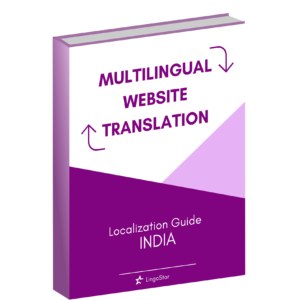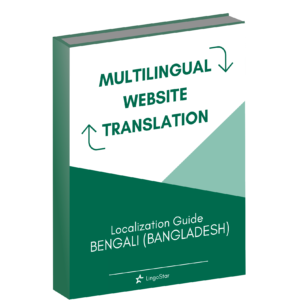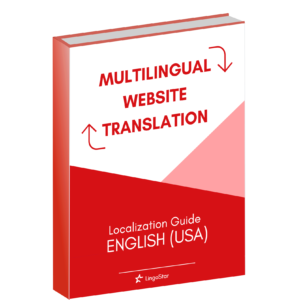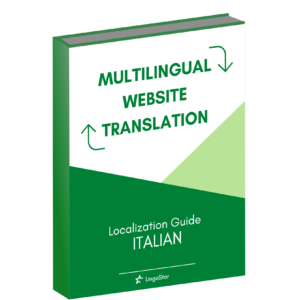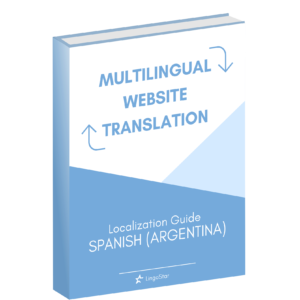Apr 6, 2011 | Translation News
Dear Language Friend, Planning a trip to Belgium? If so, be prepared for a complex linguistic situation. It is probably safest to speak English, which is neutral and likely to be understood all across the country, but maybe you are ambitious and want to speak the local language? Please read on… Contributed by Doris Anne Heidemann and Cecilia Rose. Thanks for reading! Linguistic Regions of Belgium Belgium is divided into three regions: Wallonia in the South, Flanders in the North, and the Brussels-Capital Region. In Flanders, Dutch (often locally referred to as Flemish) is the predominant language and Dutch-speakers comprise 59% of the Belgian population. In Wallonia, French is the predominant language and French-speakers comprise 40% of the Belgian population. There is also a German-speaking minority, mainly located along the Eastern border of Belgium and Germany. A small number of elderly people still speak local dialects like Picard and Walloon, however they will likely become extinct sometime in the future. The Conflict between Flanders and Wallonia Unfortunately there is an acrimonious linguistic conflict going on between the Dutch-speakers and French-speakers, which alongside with political conflict between the regions may split the country. Each side is struggling to uphold its respective culture and language. Caught in the middle is the Brussels-Capital Region, which is officially bilingual. Because of this status, both languages have to be represented by the authorities in street signage and for official matters. Interestingly, this does not apply to the education sector and schools are either Dutch or French, though in higher academia, English is quickly becoming the lingua franca. A Country Split in Two… or is...
Mar 31, 2011 | Translation News
Dear Language Friend, A comic is a graphic medium in which images support a sequential narrative. The origin of the genre dates back to Ancient Greece. Originally a comic (from the Greek κωμικός, kōmikos “of or pertaining to comedy”) was a humorous work. It wasn’t until the 19th century when the comic in its now familiar form began to spread among European and American artists. When the first comic strips began to appear in newspapers in the early 20th century, they emerged as a popular mass medium. It didn’t take long for the strips to be gathered together in cheap booklets called comic books. Their scope soon embraced all kinds of literary genres, beyond just humor. Nowadays comics can be found in a wide variety of media in different countries all over the world. In France and Japan, for example, comics – called bandes dessinées and mangas, respectively – have acquired huge popularity, even finding their way into the national curriculum. However in many countries such as the US, the educational potential of comics is yet to be fully explored. Contributed by Doris Anne Heidemann. Thanks for reading! Controversial Debate about the Educational Value of Comics in the U.S. In the 1930s debates raged in the US regarding whether or not comics should be used for educational purposes. One argument was that they increase students’ motivation and help them remember their lessons more easily, thereby making the teaching process more effective. One study from back then revealed that by the 1940s, more than 90 % of all 8 – 14 year olds and 65% of all 15 – 18...
Feb 14, 2011 | Translation News
Dear Language Friend, We hope 2011 has been fruitful so far and that we will work with you in the near future! In the following newsletter we discuss interpreting text during translation and the potential danger that has brought about throughout history. There are no two languages that are so similar to one another that it is possible to do a word-for-word translation. Because of that, no translation software can translate a complex text accurately and in the appropriate style. Think of all the difficulties that may arise when a text has to be adapted to a foreign culture. Considering this, a quality translation needs to be the product of human intelligence. Translators do not just have to have expert linguistic knowledge; they also need to have broad social and cultural backgrounds. This experience very often strongly influences the interpretation of the text. Please read on to see that this interpretation bears potential danger when controversial topics are concerned. Contributed by Doris Anne Heidemann. Thanks for reading. Violence Against Translators Over The Centuries Are translators considered an endangered species? They have been persecuted, tortured and even killed over the history of translation. But what makes translating such a dangerous profession? The answer is obvious. It is the age-old dilemma every translator is confronted with: should (s)he deliver a literal translation that is very close to the original, which might not sound natural, or should (s)he submit a free translation, which sounds nice from an aesthetic point of view but deviates somewhat from the original. The French philosopher Voltaire compared translations to women, advising that they are either beautiful or...
Jan 27, 2011 | Translation News
Dear Language Friend, Brrr, it is getting cold in B.C.!!! Winter is coming and it’s getting dark very early these days… So what’s better than sitting down at the fire with a nice hot drink and a good book?! Enjoy your reading and remember: very often a translator has had his or her share in making your reading pleasureable… In this newsletter we have a look at the U.S. translation market and invite you to follow us into the world of fiction… Contributed by Doris Anne Heidemann. Thanks for reading. Dwindling Translations in the U.S.: Why Many Foreign Authors Do Not Find their Way into the American Market Hardly any Translations of Foreign Works in the United States Are the United States regressing into cultural isolation? This is what American writers and linguists are afraid of, with hardly any translations from foreign authors being published in the U.S. According to the former Nobel Prize winner, Portuguese Jose Saramago “world literature is made by translators”. However, only 3% of the books that appear in the United States are translations from foreign languages. This figure also includes non-fiction books. Overall 340 foreign fiction books are published by American publishing companies every year: an appallingly low number! It was as far back as the Cold War when the last boom of published translations in America occurred, with the public wanting to understand issues beyond the Iron Curtain. Nowadays critics such as the famous Spanish translator Edith Grossman, speak of a “linguistic apartheid” in the U.S., while others such as the British author Tim Parks consider the lack of translations to be...
Dec 26, 2010 | Translation News
Dear Language Friend, Recently a friend asked me, “You don’t want to come home for Christmas?’’ My answer was that I would love to but a flight from Canada to Europe for a short stay in Germany over the holidays is just too expensive. How could she know how much I miss the Vorweihnachtszeit, the time before Christmas, in Germany? We have so many nice traditions, ranging from A, Adventskranz (Advent wreath) to Z, Zimtsterne (Cinnamon biscuits). This year, though, it is time to broaden my horizons and explore Christmas traditions all over the world. This is the focus for our December newsletter. Contributed by Doris Anne Heidemann. Thanks for reading. Christmas Traditions all over the World Advent in Germany: A Time for Contemplation and Celebration On the last Sunday in November, four weeks before Christmas, the first Advent is celebrated in Germany. This day introduces the Adventszeit, the holy time before Christmas. Advent means arrival and refers to the birth of Jesus on Christmas Eve. On the first Advent we light the first candle of our Adventskranz, the Advent wreath, which contains four candles in total. Each week one more candle is lit; so that on the last Sunday before Christmas all four candles burn. On Christmas Eve, it is the Christkind, not Santa Claus, who brings the presents for children and adults in Germany. This is why the most famous of all the German Christmas markets in Nürnberg is called Christkindelmarkt. By the way, there are more than 2,500 Christmas markets all over Germany and by now they can be found all over the world, even...
Nov 26, 2010 | Translation News
Introduction One of the most difficult challenges translators face in their work is translating idioms.These are figurative expressions that have developed over time, and often, are specific to a language, or a certain dialect of a language.They can be words or short phrases that make perfect sense to some, but are easily misunderstood by anyone not overly familiar with that particular dialect. Idioms are said to be a part of culture, not language, because they reflect more the lifestyle and customs of people, rather than the way those people communicate. Contributed by Cecilia Rose. Thanks for reading. Popular Idioms Here are some examples of popular English idioms that would be hard to translate: A piece of cake – something easy to accomplish. “I was worried about passing the English exam, but it was a piece of cake!” Cake is often used to symbolize leisure and privilege, as in this other example: Icing on the cake – an added bonus. “I knew I did well on the exam but getting an A+ was the icing on the cake.” Cold turkey – to quit something suddenly, typically a bad habit, or drug addiction. “He’s not the kind of person who can just slow down, he has to quit drinking cold turkey.” It is commonly thought that this idiom comes from the goose bumps that form on an addict’s skin during a withdrawal. Others, however, believe it derives from the phrase ‘talk turkey’, which means to state something in a plain manner. To cry wolf – to lie, pretend or fake something for no good reason. “That’s what he gets for...







